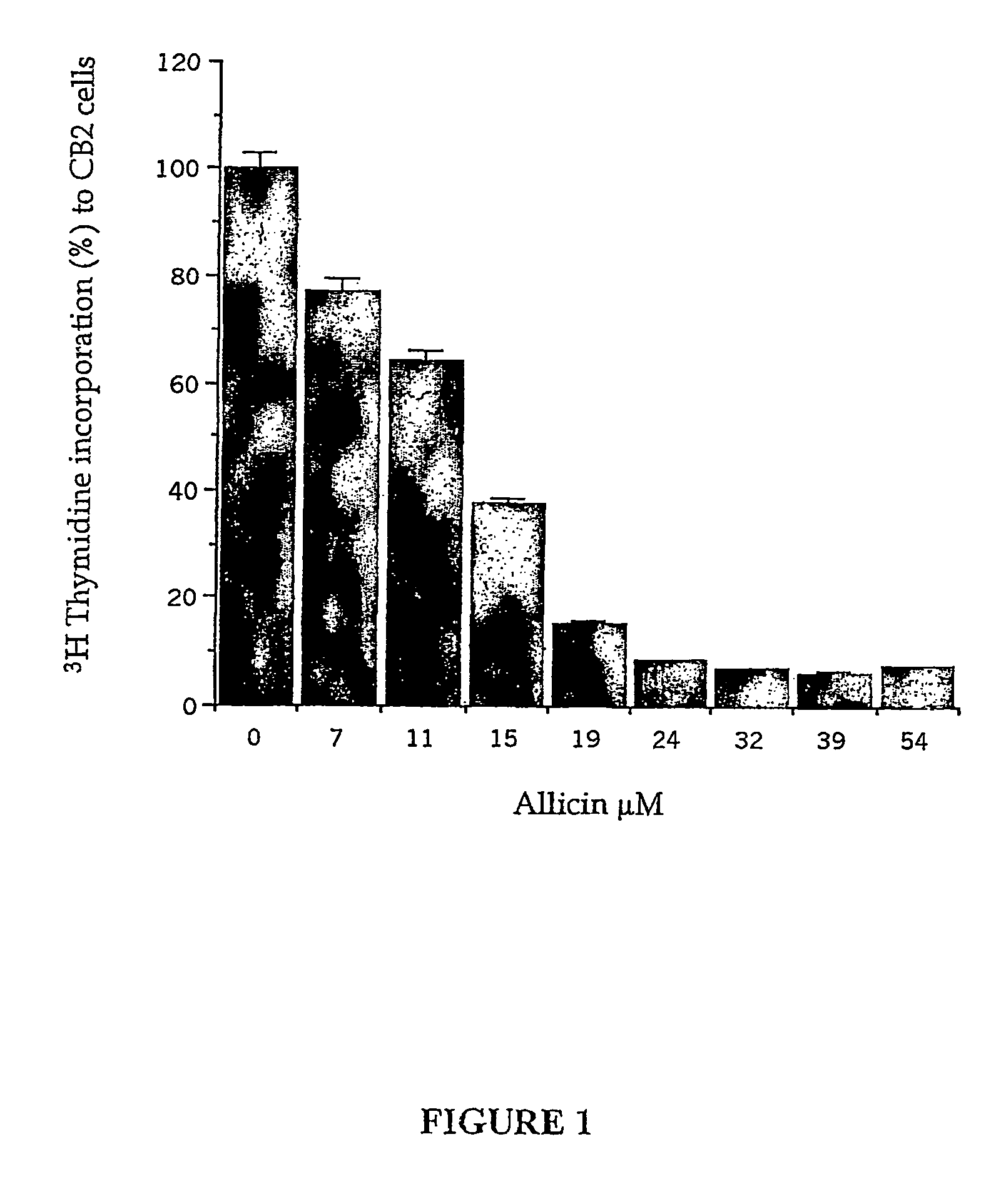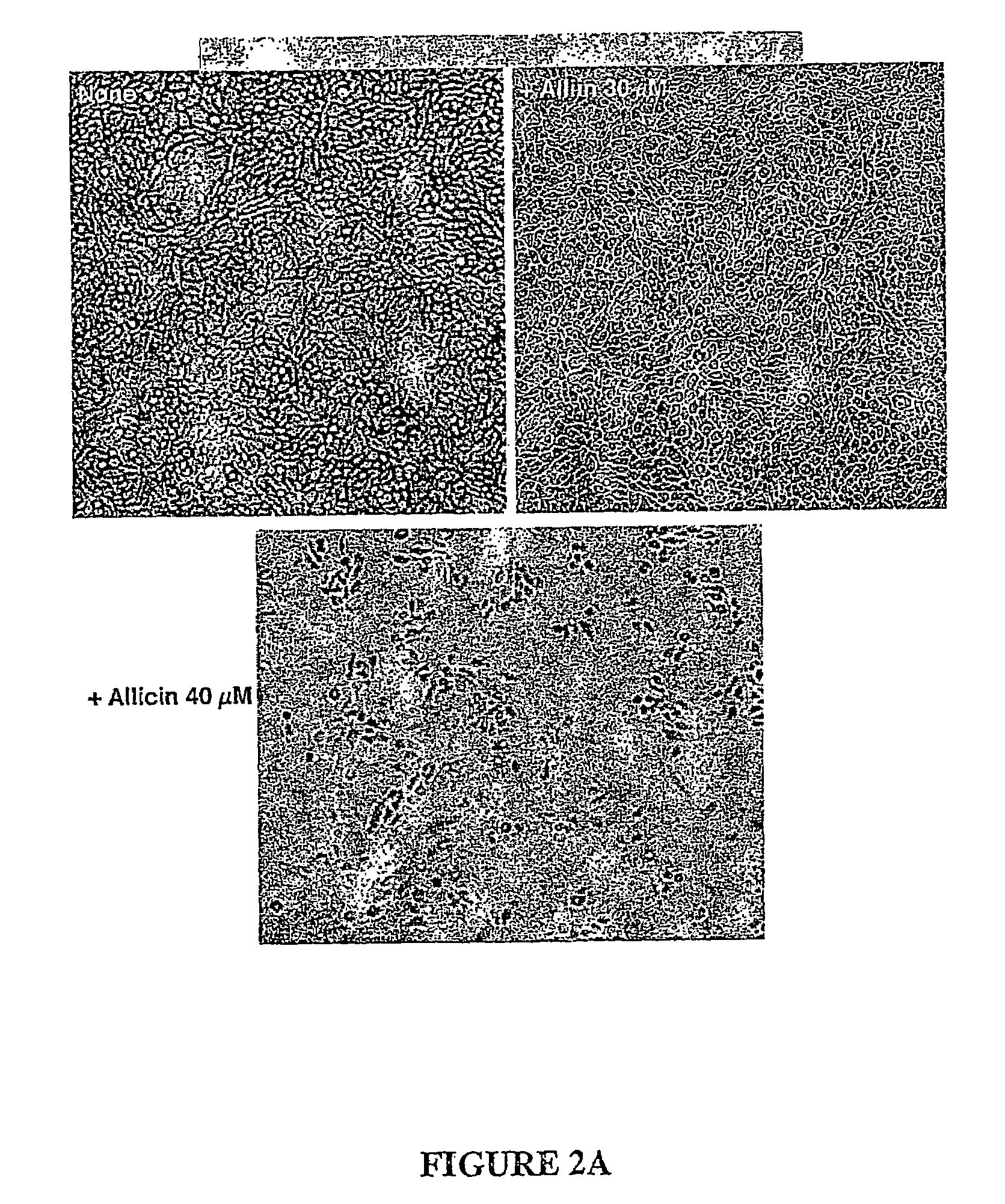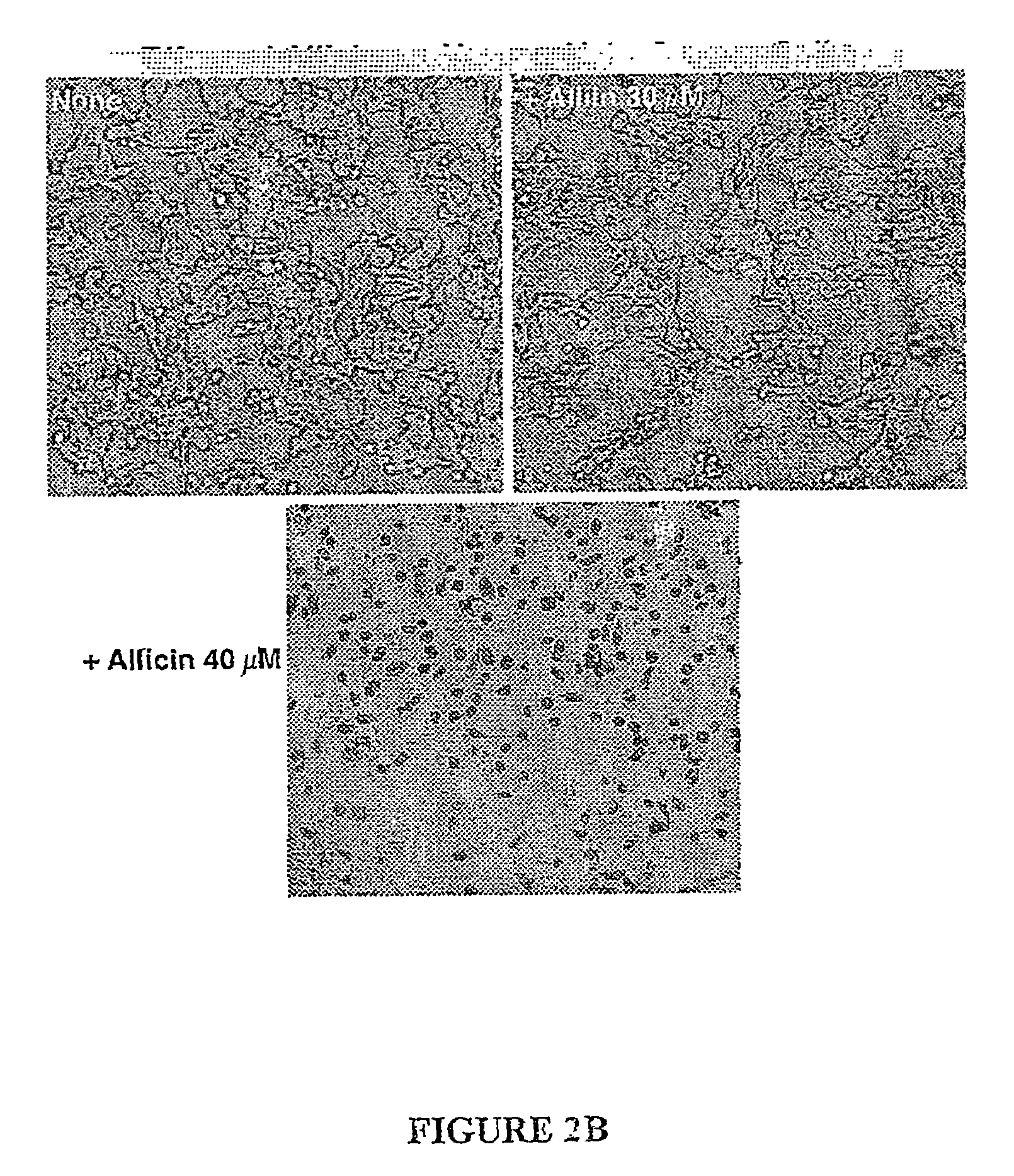Site-specific in situ generation of allicin using a targeted alliinase delivery system for the treatment of cancers, tumors, infectious diseases and other allicin-sensitive diseases
a technology of allicin and in situ generation, which is applied in the direction of lyase, antibody medical ingredients, peptide/protein ingredients, etc., can solve the problems of rapid inactivation and very reactive allicin molecul
- Summary
- Abstract
- Description
- Claims
- Application Information
AI Technical Summary
Benefits of technology
Problems solved by technology
Method used
Image
Examples
example 1
Preparation of Conjugates of Alliinase with mAb to ErbB-2 Receptor
[0132]A stable conjugate was prepared by chemically coupling purified garlic alliinase with purified mAb to the ErbB-2 receptor N28 IgG1 (Stancovski et al, 1991). In some preparations the SPDP-aliinase was reacted with polyethylene glycol, either mPEG2000 or mPEG5000, to minimize its antigenicity (Kamisaki et al, 1981). The enzymatic activity of the mAb-alliinase conjugate and its ability to convert alliin to allicin was found to be comparable to that of the non-ligated alliinase preparation. The enzymatic activity of the mAb-alliinase conjugates were determined both in solution as well as by a solid-phase assay, using our previously reported chromophoric method (Miron et al, 1998).
[0133]Thus, alliinase (2 mg / ml in 25 mM HEPES 7.0 buffer, containing 50% glycerol) was reacted with SPDP (20 μl of 10 mM SPDP in DMSO / 1.0 ml of alliinase solution for 30 minutes at room temperature). Excess of SPDP was removed by gel filtra...
example 2
Effect of Allicin and Alliin on Tissue Cultured Cells
[0136]Different concentrations of pure allicin were applied to tissue cultured human CB-2 cancer cells for quantitative determination of the effective concentration. Thus, CB-2 cells were cultured in 96-well plate (2000 cells / well) for 6-16 h at 37° C. Pure allicin was added (10 μl / well) from pre-diluted allicin solutions in PBS to final concentrations of 0-54 μM (0-9 μg / ml). [3H]-Thymidine diluted with medium was added to the cell culture (0.8 μCi / well). Cells were harvested after incubation for 16 h at 37° C. and the level of incorporated [3H]-thymidine was measured to determine the extent of cell proliferation. The results are shown in FIG. 1. These results demonstrate that addition of different concentrations of pure allicin to cell cultures inhibits DNA synthesis.
[0137]In parallel, CB-2 cells treated with alliin or allicin were stained with Trypan blue to monitor cell viability. The lethal concentration of allicin was found t...
example 3
mAb-Alliinase Conjugates Produce Allicin after Specifically Binding to Target Cells
[0138]To test whether mAb-alliinase conjugates are able to produce allicin from alliin after specifically binding to target cells, cultures of CB-2 (10,000 cells / well) and N87 cells (20,000 cells / well) grown overnight in 96-well plates were fixed with 3% paraformaldehyde (30 minutes) and washed with PBST. Fixed cells were treated with mAb to ErbB-2 receptor only or with conjugates consisting of either mAb-alliinase or F(ab)-alliinase (which was obtained after reduction of the Fc depleted antibody) (2 μg / well) for 1 h at 37° C. The wells were washed (×3) with PBST and incubated with alliin (0.1 mg / ml, 0.1 ml / well) in 4×10−4 M NTB in 50 mM phosphate buffer pH 7.4 containing 2 mM EDTA. Controls of fixed cells with alliin / NTB were used. Readings were done by ELISA Reader after 30 minutes (A412).
[0139]The results are shown in FIG. 3 wherein the black columns represent CB-2 cells and the gray columns repres...
PUM
| Property | Measurement | Unit |
|---|---|---|
| molecular mass | aaaaa | aaaaa |
| Tm | aaaaa | aaaaa |
| Tm | aaaaa | aaaaa |
Abstract
Description
Claims
Application Information
 Login to View More
Login to View More - R&D
- Intellectual Property
- Life Sciences
- Materials
- Tech Scout
- Unparalleled Data Quality
- Higher Quality Content
- 60% Fewer Hallucinations
Browse by: Latest US Patents, China's latest patents, Technical Efficacy Thesaurus, Application Domain, Technology Topic, Popular Technical Reports.
© 2025 PatSnap. All rights reserved.Legal|Privacy policy|Modern Slavery Act Transparency Statement|Sitemap|About US| Contact US: help@patsnap.com



